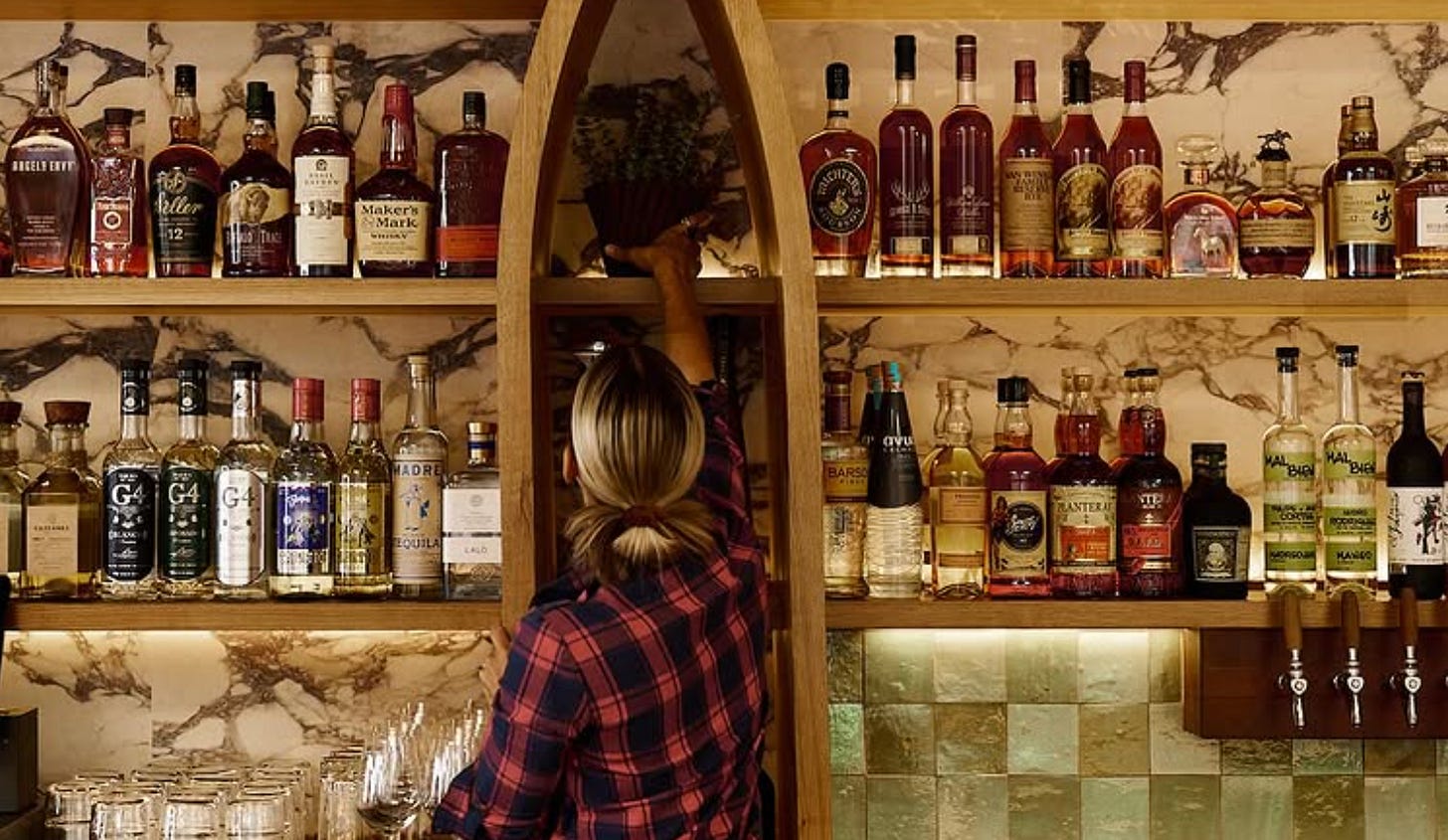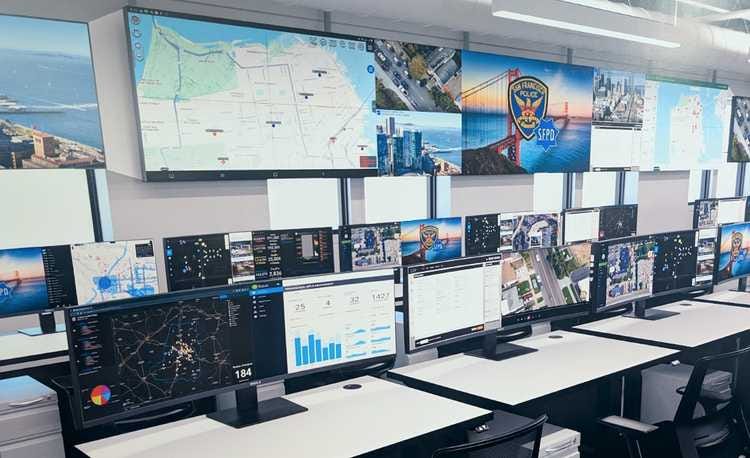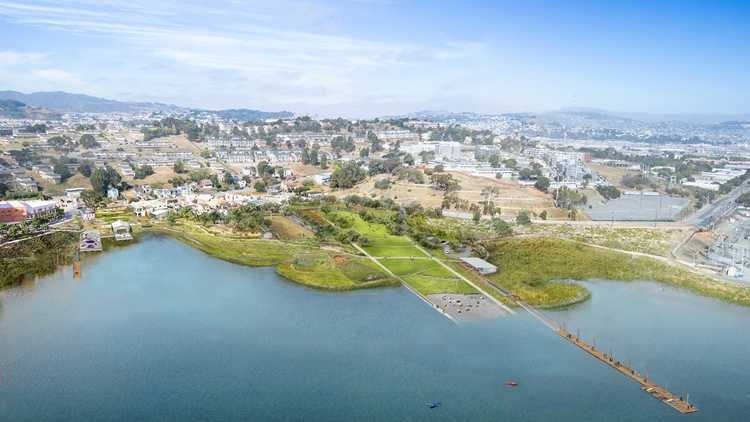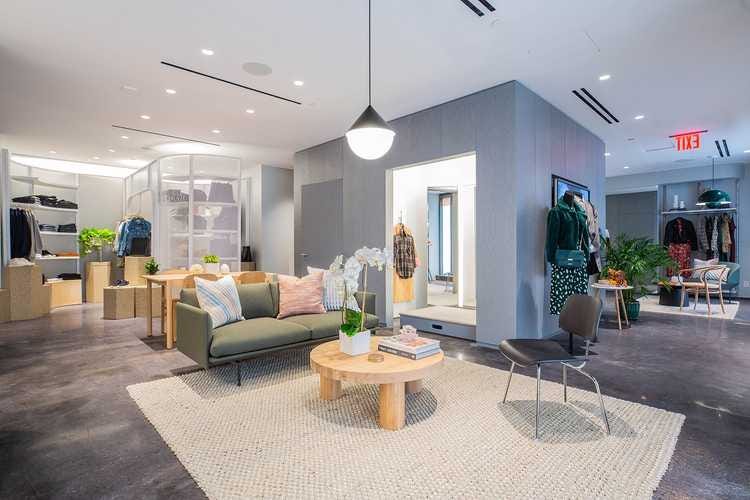SFPD Gets New High-Tech Investigations Headquarters
PLUS: San Francisco Parks Alliance to Shut Down Amid Financial Mismanagement
What You Need To Know
Here’s what happened around the city for the week of June 1, 2025:
- SFPD Gets New High-Tech Investigations Headquarters
- San Francisco Parks Alliance to Shut Down Amid Financial Mismanagement
- Nordstrom Returns to San Francisco with a Local Hub on Fillmore
Recent & upcoming openings:
- Dawdle over a dram at Bar Darling
Research & Analysis
- Serving San Francisco: What are commissions?
SFPD Gets New High-Tech Investigations Headquarters
Published June 5, 2025
SFPD is getting a new high tech Realtime Investigations Center (RTIC) in downtown SF thanks to $9.4 million in donations. It doubles down on a strategy that's already showing results: auto theft is down 41%, citywide crime down 30%, and RTIC officers helped bust 32 suspects just last week.
The Facts
San Francisco’s Real Time Investigations Center (RTIC) is expanding into a new, modernized headquarters at 315 Montgomery Street, thanks to $9.4 million in donations from Ripple, the San Francisco Police Community Foundation, and Crankstart. The new space provides a state-of-the-art facility for the SFPD’s growing RTIC unit, including 12 drones, citywide surveillance tools, license plate readers, video walls, and real-time analytics software.
The Context
The first version of the RTIC, which is currently located in a windowless basement room in the Hall of Justice, has already made a measurable impact. Since launching in March 2024 following the passage of Proposition E, it has supported more than 500 arrests, helped avoid dangerous vehicle pursuits, and contributed to a 41% drop in auto thefts, according to a press release from the Mayor's office.
Proposition E (March 2024), which GrowSF supported, gave SFPD the authority to modernize its toolkit—legalizing broader use of drones, automated license plate readers, and real-time video analysis, while ensuring the proper oversight is given to their use. This resulted in the creation of the Realtime Investigations Center (RTIC), which was housed in a windowless basement room at the Hall of Justice.
The GrowSF Take
We're thrilled to see that voting yes on Prop E is already paying off. Smart, tech-enabled policing is delivering fewer car thefts, lower crime, and real-time response to keep neighborhoods safe. The new RTIC is a model for how cities can fight crime effectively while respecting civil liberties. Let’s double down on what works—and make sure the future of policing is efficient, transparent, and rooted in results.
San Francisco Parks Alliance to Shut Down Amid Financial Mismanagement
Published June 3, 2025
The San Francisco Parks Alliance is dissolving after it misused millions in restricted funds, leaving community groups and projects in limbo.
The Facts
The San Francisco Parks Alliance, a nonprofit integral to funding and supporting the city's public spaces, is shutting down following revelations of financial mismanagement. The Chronicle reports that the organization's board voted to dissolve the organization last week, after revelations that at least $3.8 million in restricted funds were improperly used for operating costs. The nonprofit is now facing investigations from the city attorney and city controller, and a criminal probe by the district attorney.
The Context
The misuse of restricted funds by the Parks Alliance came to light after its longtime CEO, Drew Becher, resigned in February 2025. The organization had been a key player in managing funds for over 80 neighborhood groups and park projects, and in raising private donations to support park improvements and events.
The Parks Alliance has a long history, dating back to its predecessor organization Friends of Recreation & Park's founding in 1971. In 2011, it merged with the San Francisco Parks Trust to form the current organization. The Alliance has been instrumental in funding and supporting local park projects. It functioned as a fiscal sponsor for numerous community groups, enabling them to manage donations and fund projects without obtaining separate nonprofit status.
The GrowSF Take
This is a huge loss for San Francisco. The Parks Alliance has played a crucial role in funding and supporting local park projects, and its dissolution leaves a significant gap in the city's ability to manage and improve public spaces. The misuse of funds & shutdown not only jeopardizes ongoing projects but will ripple through our parks system for the years to come.
It's not yet clear how the organization was able to misspend such a large amount of money without the Board of Directors becoming aware. We hope the City's investigations will shed light on this issue.
Nordstrom Returns to San Francisco with a Local Hub on Fillmore
Published June 6, 2025
Photo Credit: Nordstrom Local West Village, New York City. Photo by Nordstrom.
Nordstrom left the City in 2023 when it closed its huge location in the Westfield mall. But now Nordstrom is making a comeback with a new Nordstrom Local hub in Pac Heights.
The Facts
After jumping the hurdles at the Planning Commission, Nordstrom will come back to San Francisco with a new concept called Nordstrom Local in Pac Heights. The store won't have any inventory, though — just online order pickups, returns, tailoring, and gift wrapping.
Nordstrom overcame the typical NIMBY opposition from a few neighbors, who almost succeeded at keeping the long-vacant storefront empty.
The Context
San Francisco requires any business with 11+ global locations to get special government permission to open in most neighborhoods. The law, first enacted in 2004, has made it difficult to fill storefronts and has slowed down the city’s economic recovery. According to a recent study by Maven Commercial, the average wait for approval is over seven months and costs applicants upwards of $25,000 in legal and consultant fees.
That's right - Nordstrom needed special government permission, accounting for hundreds of hours of City Hall staff time, and tens of thousands of dollars in legal fees, just to open a new store. This backwards law almost killed the project entirely, which would have kept the space empty.
This will be just the seventh Nordstrom Local in the country, and the first in San Francisco.
The GrowSF Take
It's time to get rid of the laws that keep storefronts vacant and make it harder for businesses to open in San Francisco. The Nordstrom Local saga is a perfect example of how our outdated formula retail laws are holding back our economy and keeping our commercial corridors lifeless.
In the February 2025 GrowSF Poll, 75% of respondents said they support eliminating or reforming the formula retail law. It's time our Supervisors acted on it.
If we want thriving neighborhoods, we need to let well-run businesses open without treating them like villains.
Recent & upcoming openings
A great city is constantly changing and growing, let’s celebrate what’s new!
Dawdle over a dram at Bar Darling

WHERE: 2263 Chestnut St
WHEN: Opened June 3. 2pm-2am Tu-Fri, noon-2am Sat & Sun
Bar Darling is taking over the former home of Squat & Gobble in the Marina. According to Dianne de Guzman at Eater SF “The vibes are ‘a cocktail reception at a family wedding’: Think brie puff pastry bites with rosemary-fig jam […and…] vegetable- and fruit-forward cocktails that should prove highly drinkable in the summertime.”
Research & Analysis
Serving San Francisco: What are commissions?
Published June 2, 2025
Citizenship is not a spectator sport.
- Robert Putnam, Bowling Alone
This is the first post in our series called Serving San Francisco, highlighting the ways you can help our city thrive.
There are myriad ways in which you can participate in local government and improve the fabric of our civic community. One such way is by joining a commission. But before we can convince you to apply for a commission, you first need to know what they are.
Let’s start with the basics - what exactly is a commission?
A commission is a governmental body made up of people who oversee, manage, and provide input to different City departments, policy areas, or funds. We call them “commissions” but they include Boards, Task Forces, and pretty much any other name you can think of for a small group of people.
Most cities have commissions, but San Francisco’s are unique in that we have more than twice the number of commissions of any comparable City or County (at least 130!)1, and several of our commissions have a lot of power. If you haven’t already, take a spin through our Commissions Tracker to see just how many there are.
What is the purpose of a commission?
It depends who you ask!
Some cities, so called “Strong Mayor” cities, view commissions as an extension of the Executive Branch. Seats are filled with Mayoral appointees and commissions are generally seen as being an arm of the Mayor’s Office providing administrative oversight or management of a department or policy implementation.
Cities like San Francisco view commissions as bodies that engender Public trust through public meetings and citizen participation. Commissioners are mostly members of the public at large, and most commission meetings are open for public comment, with recordings made available on SF Gov TV.
In both models, and in hybrid models, commissions exist to provide oversight and accountability of departmental operations. Every commission has an affiliated Department (with Staff who have to work with these commissions, preparing materials, answering questions, and more - it's a lot of work!) commissions provide input and, often, directly oversee the policy and fiscal operations of a governmental Department.
Where do commissions come from?
In general, commissions can be created in five ways:
By Charter, which is basically our City’s Constitution. It was originally authored in 1898, and re-written in 1996. It outlines how our city government is structured, including the creation and authority of various commissions. Examples include the Police Commission, Civil Service Commission, Planning Commission, Fire Commission, and Health Commission (all of which were included in the 1932 Charter and the 1996 re-write).
By Charter Amendment. From time the time the voters amend the City Charter2, which sometimes creates new commissions. Examples include the Historic Preservation Commission, Public Works Commission, and the SFMTA Board of Directors.
By Ordinance, via laws passed by our Board of Supervisors. These can be modified or dissolved by the Board of Supervisors through - well, new ordinances. Examples of such are the Film Commission and the Children, Youth, and their Families Commission.
By Ordinance via ballot measure, which can only be repealed or modified by other ballot measures. One example is the Sunshine Ordinance Task Force.
By State or Federal Law. While Laws don’t usually create the commissions, they can require the establishment of them to ensure compliance or oversight at the Municipal level. Examples include LAFCO, the San Francisco Health Authority, and the Retirement Board.
And, sometimes, commissions are a result of a combination of these - the Human Rights Commission was created by ordinance in 1964, but was later voted into Charter status in 1990.
All in, about 30% of commissions were created by Charter or Charter Amendment, 61% by Ordinance, and the rest by a combination of Charter and Ordinance, or by state law3.
What are the different types of commissions?
There have been a few different methods of categorizing commissions over the years. We like the method used by the Controller’s Office4 as part of their work for the commission on Streamlining. They describe three types of commissions:
Governance - Most of these commissions were established in the Charter and are decision-making bodies with the ability to hire and fire Department heads. They generally have significant authority to make policy decisions and direct Departmental resources. Some of these commissions also have quasi-judicial responsibilities. The Police Commission, for example, adjudicates cases of officer discipline. There are ~28 of these bodies, including the Health Commission, Public Works Commission, and the MTA Board of Directors.
Regulatory - These commissions uphold and enforce existing law; they often hold hearings and settle disputes. In this sense they are often referred to as being quasi-judicial. Some of these have some decision-making power, and some have a LOT. There are ~16 of these, including the Planning Commission, and the Building Inspection Commission.
Advisory - These commissions advise City Departments. They can’t hire or fire, they don’t adjudicate, they just advise. The majority of commissions fall under this category. Examples include: SFMTA Citizen’s Advisory Committee, the Parks, Recreation and Open Spaces Advisory Council, the Youth Commission, and more.
There can be overlap between types - for example, several commissions, including the Police Commission, and Planning Commission, are both Governance and Regulatory.
What departments do commissions work with?
Commissions work with about 45 different City Departments of our city’s ~50 total departments.
I heard there’s a commission to streamline commissions - is that true?
It sure is! Kafka would be proud.
In the Nov 2024 election, voters approved Proposition E, which created the Commission Streamlining Task Force to make recommendations to the mayor and Board of Supervisors about ways to modify, eliminate, or combine the various commissions, Boards, and other related bodies to make them more effective and efficient. The Task Force must submit its recommendations by Feb 1, 2026, and will automatically disband on January 31, 2027.
So far, the Task Force has had six meetings. They've been working to identify all of the commissions in San Francisco (yeah, the number on that list has been a longstanding question in SF for years!)5, agree on their purpose, structure, their appointing authorities and the appointment process. Two of the individuals on this Task Force were also on the Task Force that created SPUR’s Designed to Serve report, and many of their recommendations and questions are aligned with what is in that document. If you’d like to follow along on their work, head to their website.
What are other good reads on commissions in San Francisco?
Here’s a list!
Phew! That’s enough for now. Stay tuned for the second half of this post where we dive into why you should join a commission, and how you can apply.
https://www.sf.gov/sites/default/files/2024-06/Commissions%20Impossible%20Report.pdf p3↩
https://growsf.org/research/2025-04-21-sf-city-charter-longest-in-america/↩
https://media.api.sf.gov/documents/8._Commission_Attributes_v3.pdf p15↩
https://media.api.sf.gov/documents/8._Commission_Attributes_v3.pdf p5-7↩
https://sfstandard.com/2023/07/06/only-1-person-at-sf-city-hall-knows-the-answer-to-this-simple-question/↩





